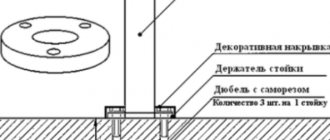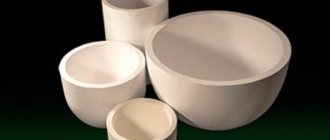Forged mirror with vines, leaves, shoots, grapes. Photo Artferrum
Forged leaves, like other types of plant-themed elements, are widely used to complement a wide variety of metal products . Volumetric leaves of various types give interior items and surroundings a special mood . Leaves, which are part of the design of outdoor items , are in perfect harmony with living plants. Bright compositions are created from leaves and other details ; they are often used as an independent decoration. This article contains complete information about forged leaves, their types and the products that they decorate.
Types and shapes of metal elements, samples, drawings/photos
Manufacturers offer a wide selection of forged leaves . The diversity of plants in nature is easily recreated by metal forging masters.
Grape, grape leaf
Forged grape leaves are the most popular floral elements . There are practically no designs that a grape leaf cannot decorate. In addition to leaves, clusters, shoots and vines are often used. From these elements, various designs can be easily assembled, each of which is unique and unique.
Forged grape leaf. Photo by EHK
Oak trees, oak leaves and acorns
Forged oak leaves in combination with acorns and twigs amaze with their natural curves and texture . These elements fill the product with life , which makes it incredibly beautiful.
Forged oak sheet. Photo Siberian Trading Company
The design of the item with oak leaves leaves no one indifferent and goes well with wood elements. The patina gives the product special value and splendor; the application of paint emphasizes the volume of the leaves.
Acanthus leaves (acanthus)
The motif originated in antiquity and was widely used in Greek, Roman and Byzantine architecture. Forged acanthus leaf is a decorative element of classical fences . These parts are actively used in artistic forging today. The rich history of the element demonstrates its relevance and demand.
Forged acanthus leaf. Photo Iron Master
Maple, maple
Figured forged maple leaves are less common , and their range is less significant. Despite this, compositions of leaves and twigs harmoniously complement products of various configurations. This solution is more suitable for outdoor items .
Forged maple leaf. Photo obverse forging
Roses, sunflowers and other flowers
, floral elements are also popular . The most common are forged rose leaves . Flowers with leaves are quite difficult to find in the design of any products; they are most often used to create decorative wall panels and table bouquets in a vase . Such solutions transform the interior and add a bright accent to the space.
Artistic forging. Rose. Workshop Phoenix from Novokuznetsk
Clients are also offered leaves of other flowers : lilies, sunflowers, lilies of the valley, tulips and many others. Such elements are most often made to order.
Pomegranate
The fruits and leaves of fruits , have an interesting and “juicy” design . Such decorative details, like floral elements, often act as an independent decorative accent . Grant trees have a unique design, which can be placed both outdoors and indoors.
Forged garnet with leaves. Ilmen Photos
It is worth noting that this list is far from complete . Customers often find in manufacturers’ assortments products made in the form of bamboo stems and leaves .
Forged bench-shoe rack with stems and leaves of bamboo. Photo by TechInKov
Objects decorated with chestnut leaves . Upon customer's request, it is possible to produce almost any plant elements.
Forged console with chestnut leaves. Photo Kuznechny Dvor (Kazan)
Doubles
Paired forged leaves: left and right - have a double-sided pattern, a complex contour, are used to complement various products, and are especially popular in the production of fences and railings .
Forged paired leaves. Svarog Photos
Small and big
It is the variety of sizes of forged leaves that allows them to be used to decorate products that differ in size. Buyers are provided with small, medium and large leaves .
Small forged sheet. Photo Arabesque
Elements of the first group are used for assembling panels and bouquets , decorating small interior items, parts of the second category are intended for the production of interior and garden furniture , large leaves are suitable for large structures : gates, fences, canopies, etc.
Stamped and handmade
In most cases, forged elements are produced using cold technology. The use of special equipment and machines allows us to produce decorative parts that are identical in design and affordable. In addition, this method ensures the production of a large number of elements in a short time.
Sliding gates with stamped leaves. Photo THREE MARIES
At the individual request of the client, it is possible to produce leaves using hot forging technology, i.e. using hand tools: a hammer or sledgehammer, an anvil, as well as artistic forging operations. As a result, the buyer will become the owner of unique design elements that have a higher value. A composition made from such leaves is completely unique. You can also assemble a rather interesting design from stamped parts, but it will not be exclusive.
What does a plant bouquet look like?
Template for forging leaves.
A set of decorative items and various forged parts have a harmonious combination, they are easy to assemble into certain patterns, each is unique and individual in its own way.
Previously, using artistic forging, elements such as flowers and grape leaves were rarely made with one’s own hands, although they are considered a traditional option. In modern design and decoration, climbing grapes made of metal have found their wide application and are an integral part. This product fits harmoniously into various iron structures as additional decorative items.
Forged elements, as a decorative addition that imitates plant patterns, have artistic value. When forging a vine, in order to imitate living shoots of grapes, you have to twist the bends into rings, and then the ornament using a large number of leaves takes on a living, natural look.
Products for decoration: stairs, fences and others
Forged vegetation is used for decoration :
- stairs, railings and fences (fences);
- furniture and other interior items: flower stands, paintings;
Wrought iron wall hanging shelf, decorated with leaves and curls. Tsarskaya Kovka Photos
- lamps;
Forged table lamp with leaves. Photo Hephaestus (Kharkov)
- bridges, gazebos and other landscape items.
Gazebo with forged vine, grapes and leaves. Photo KovArt
Forging elements completely transform the design of the product, giving not only the object, but the entire space a special atmosphere.
DIY forging
Making leaves at home can be done using hot and cold forging technology. To work manually with metal, the performer must have extensive knowledge, which is quite problematic to acquire on your own. To do this, they most often receive education in blacksmithing institutions.
Reference. Forging master classes clearly demonstrate the complexity of metal processing by hand.
Not all beginning craftsmen have extensive skills, so when producing leaves with your own hands, the cold forging method is more often used. In this case, special stamps and homemade stencils are used. Some performers who are constantly engaged in the manufacture of forged products have at their disposal blacksmith equipment and blacksmith tools, which simplify the production process.
When creating leaves with your own hands, special attention should be paid to painting the elements.
For your information: we have a page about making forged leaves with your own hands.
How to make from a corner and other materials, artistic and cold forging
The following videos from experienced performers allow you to get an idea of the process of making forged leaves. Master classes will be useful for beginning performers; experienced blacksmiths will be able to evaluate the work of their colleagues.
Rose leaves: cold and hot forging, welding, applying texture with your own hands
- Using a template, the outline of the future element is drawn on a piece of metal, unnecessary parts are removed, the edges of the workpiece are processed and turned on a grinder.
- Five leaves are fastened with a clamp, a groove is cut with a grinder for welding the stems, which the master makes on an anvil.
- The elements are heated in a furnace, and the edges are pulled back.
- The veins are drawn on the parts with a marker, and the texture is applied using a homemade device.
- The edges are processed with a grinder, thereby forming teeth.
- The parts are cleaned and burrs are removed.
- A ball hammer is used to give the final shape.
Grape leaves, artistic forging with your own hands
- The paper template is glued to a piece of metal 2 mm thick.
- Excess metal parts are removed with a grinder.
- The workpiece is heated in a forge, and with the help of homemade devices of different sizes, a texture is applied - veins.
- The element is cleaned with a brush with metal bristles.
- Finally, the edges should be processed and tapped with a hammer.
Forged sheet metal, hot worked by hand and with a hammer
- The outline of the part is drawn on the corner with chalk, and the excess metal is cut off.
- The workpiece is heated, processed on a forge hammer, and then manually on an anvil, the master taps the part with a hammer.
Making forged leaves using a homemade stamp from a spring on a hammer
- Made from springs 20 mm thick. A blank for the stamp is cut out, onto which the texture is applied. The master makes 2 blanks: right and left, which are then hardened.
- A thick piece of metal is heated and a workpiece is placed on it. By striking a forging hammer, a sheet-shaped depression is formed in the metal. The stamp is ready.
- Blanks of elements are marked and cut out on the metal, onto which the texture is then applied using a stamp.
- The elements are manually given volume.











